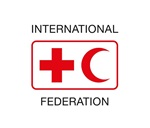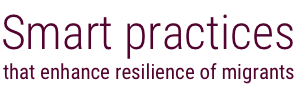A reception centre at the border offers a central and known space that supports migrants with initial basic assistance and accommodation.
The Italian Red Cross reception centre receives migrant males entering or transiting the country (mainly from West and East Africa), provides them with assistance and accommodation, and helps them integrate into the community (where needed). When migrants arrive, they are registered and undergo medical evaluations. They are also provided an information session on their location, rights and on how to seek asylum in Italy. The centre is equipped with dormitories with private toilets and showers, a cafeteria, a washing room, a gym, and a TV room for residents’ use. Migrants are permitted to stay in the centre; however, people can come and go with freedom. The centre has also developed a series of good practices in terms of integration and social inclusion, to help empower migrants. Most long-term beneficiaries end their reception experience with a job. The centre also provides social and welfare services to the most vulnerable in the local community. The centre is seen as a model by the local authorities, in terms of security, acceptance and perception. Staff of the centre are often asked to promote the model in other regions. A training programme for those operating reception facilities has been developed, to ensure that minimum standards can be guaranteed even when other service providers (outside the National Society) are involved.
The Centres for Care for the Irregular Migrant (CAMI) is an initiative led by the Government of Honduras through the National Migration Institute (INM). The centres assist international migrants who entered the country irregularly. Migrants are provided three possible outcomes: (1) deportation, (2) a permit to transit the country for 72 hours, (3) regularization of their stay. The CAMI offers the following services to migrants: (1) gender-separate accommodation (on average, migrants stay for 3-8 days), (2) warm food (three meals a day) that respects cultural preferences, (3) toilets and sanitary facilities, (4) an entertainment area with TV and board games, (5) a laundry area, (6) medical and first aid services, (7) psychological support, (8) a phone call, and (9) security surveillance. Additionally, the centre has a working knowledge of different languages: staff are bilingual (Spanish and English) and it hires translators, if necessary.
Centres have a capacity to annually provide for 12,000 people transitioning through Italy and 400 people long-term.
(CAMI served ~20,000 irregular migrants in 2015.)
Design. [P1] Focuses on addressing the immediate needs of migrants arriving in Italy. [P4] Recognizes the right of migrants to receive support on arrival regardless of status.
- The complexity of administrative and legal procedures linked to the asylum seeking
- Networking is the fundamental element for effective implementation of services. The Italian Red Cross has worked closely with local networks, municipalities, foundations, and youth associations to build a relationship of trust and facilitate social inclusion.
- It is important to make relevant services available to locals, to build acceptance for the centre.
- It is important to respect cultural preferences.
Smart practices
Smart practices report and database survey
About the report
People migrate in pursuit of a better life for themselves and their families. As described in the International Federation of Red Cross and Red Crescent Societies’ (IFRC) Policy on Migration, “migrants are persons who leave or flee their habitual residence to go to new places – usually abroad – to seek opportunities or safer and better prospects.
Read more
About the International Federation

